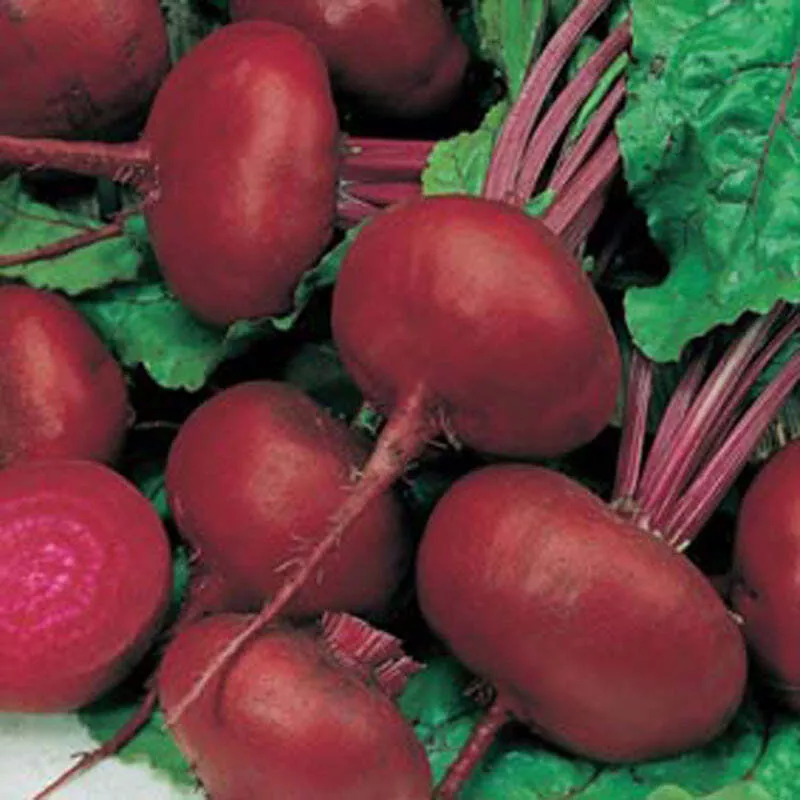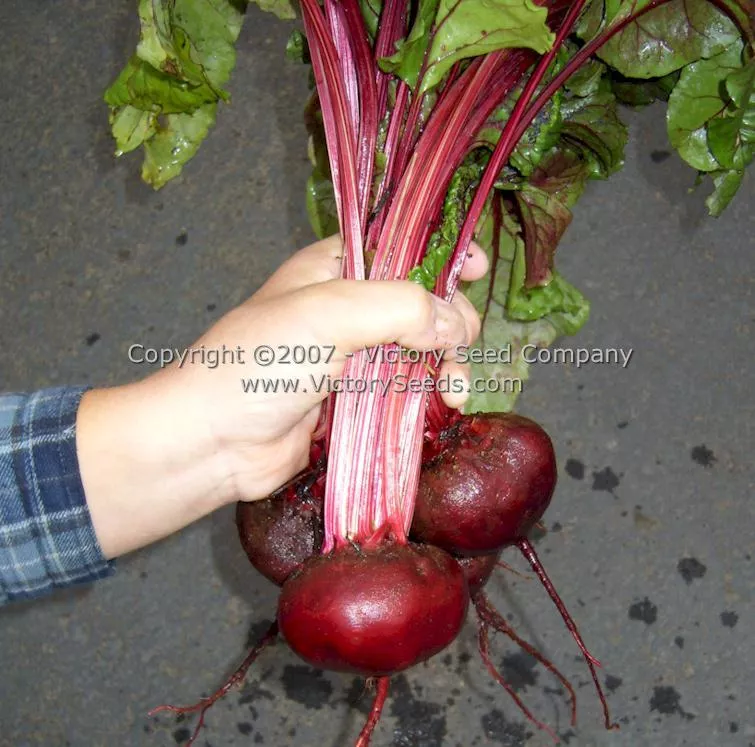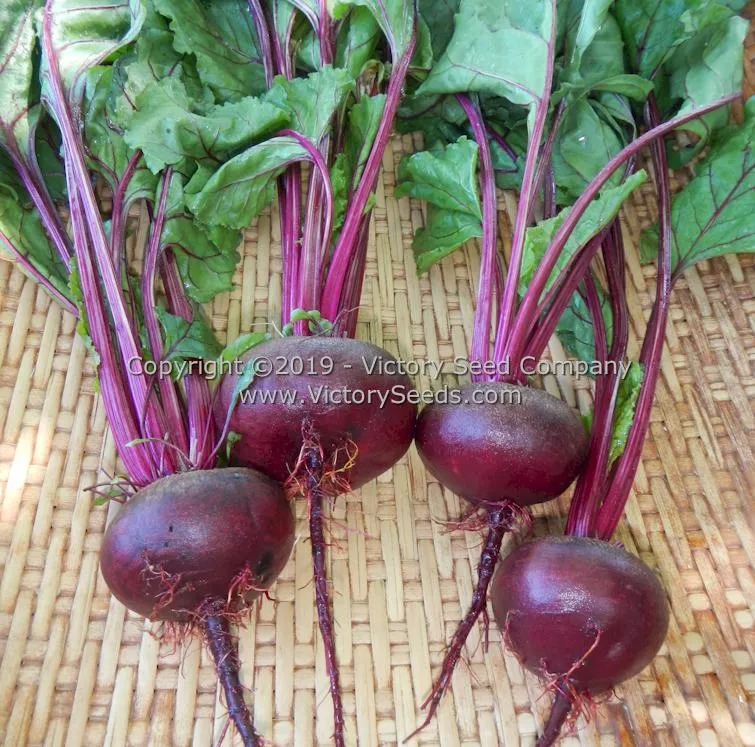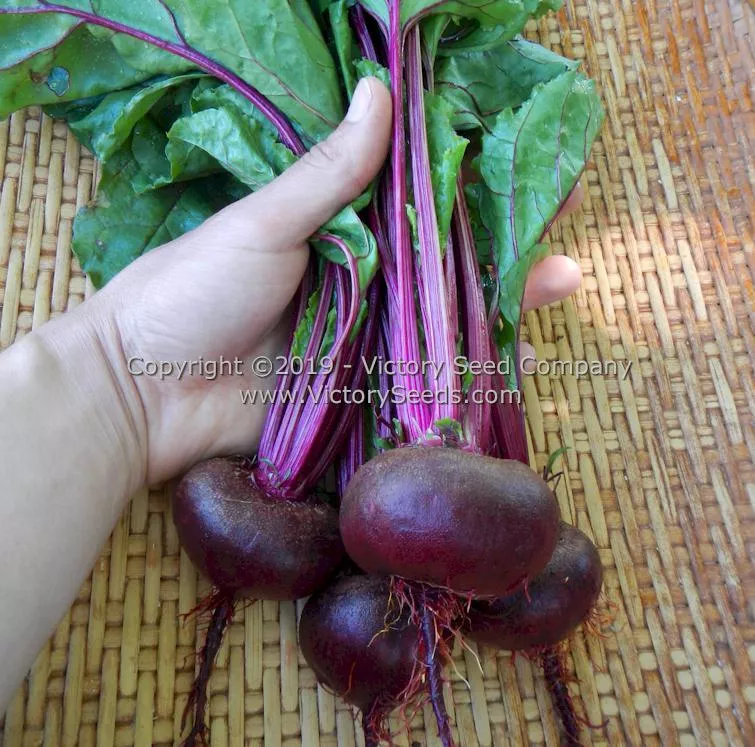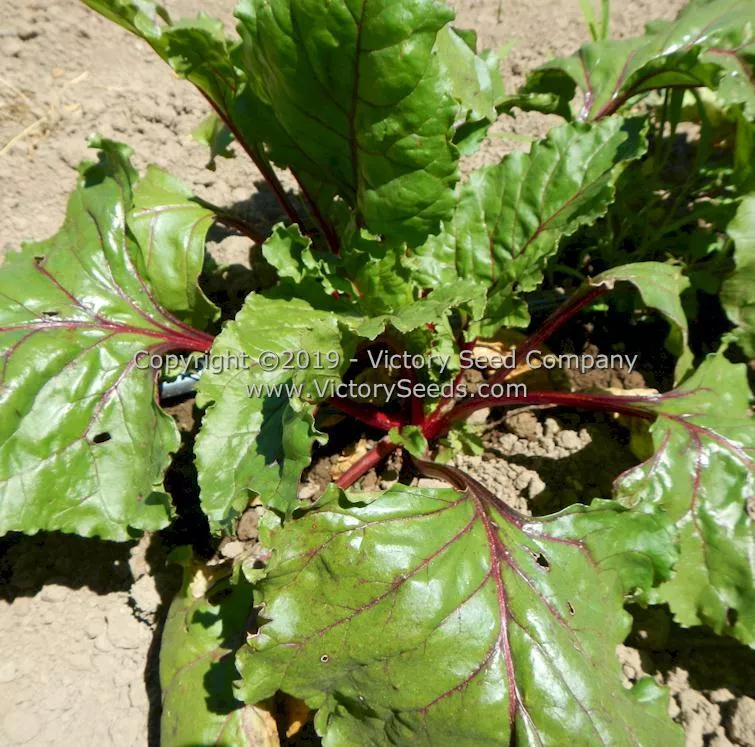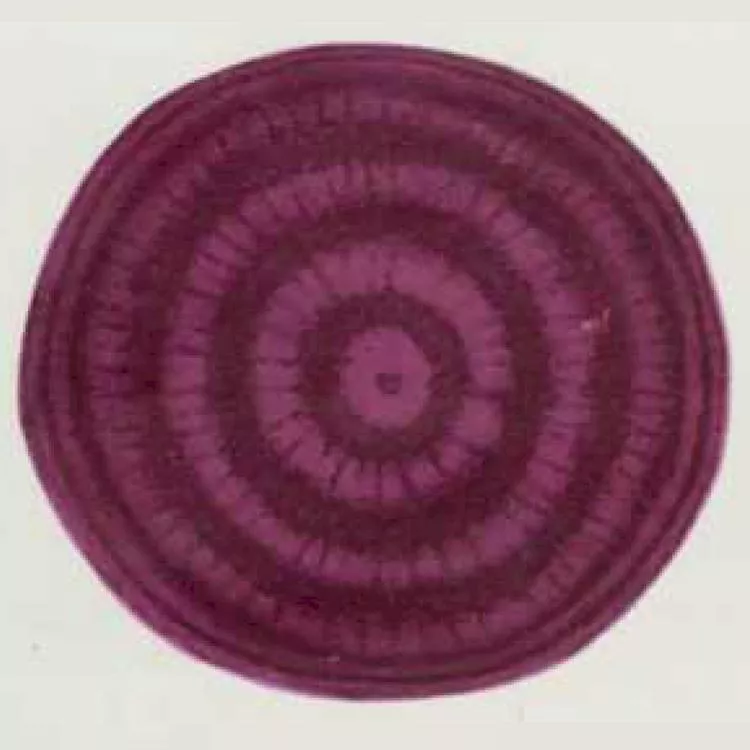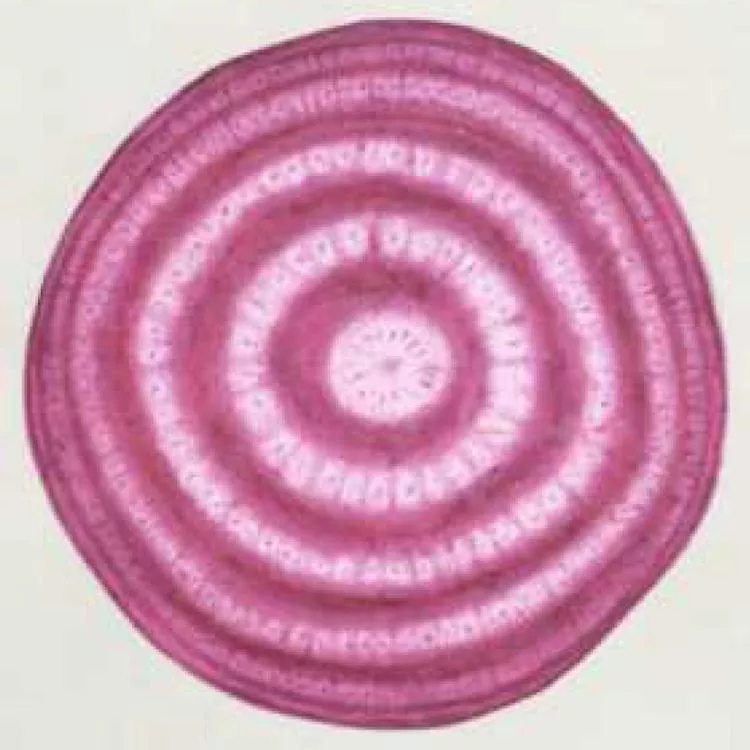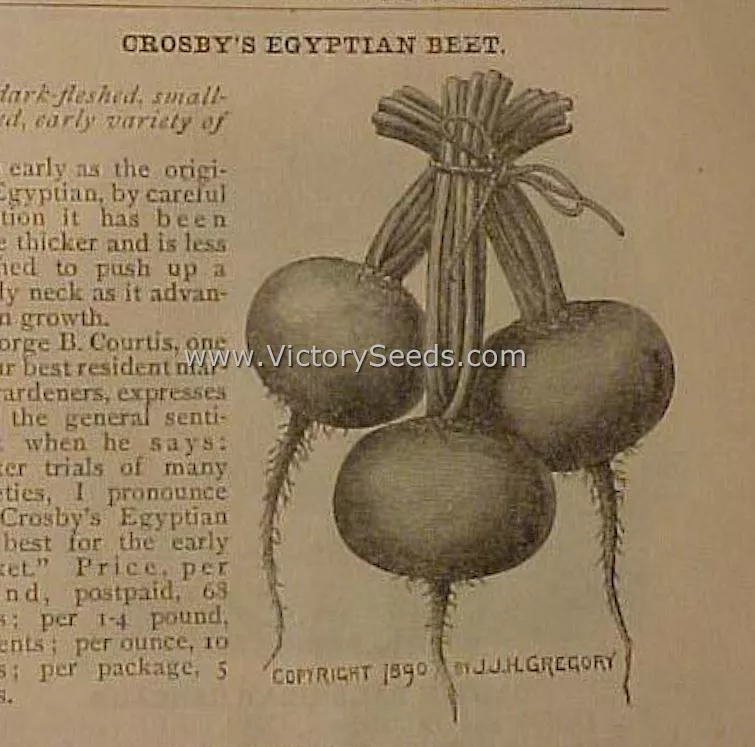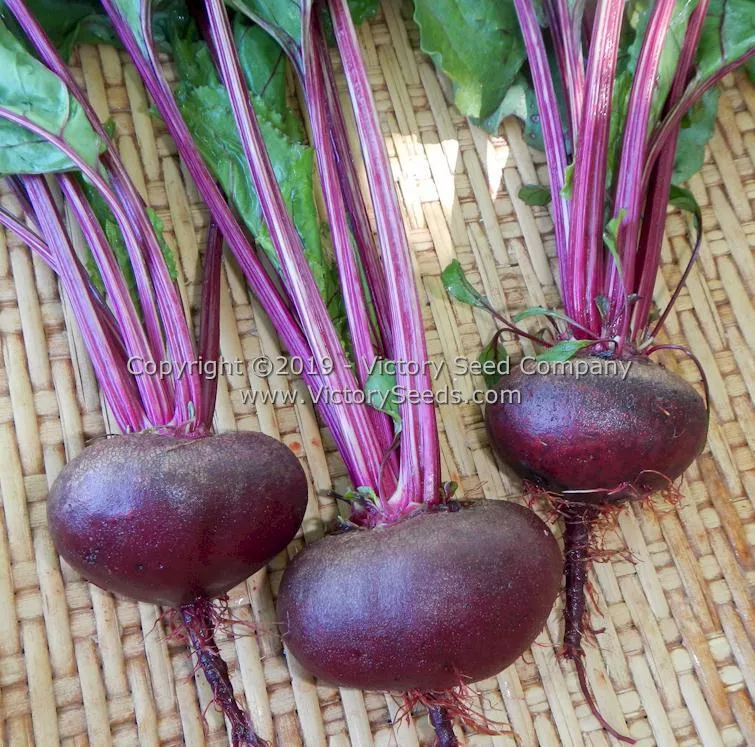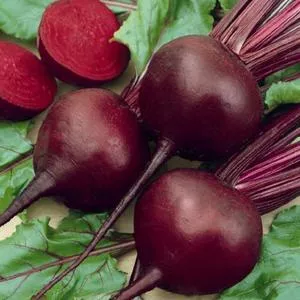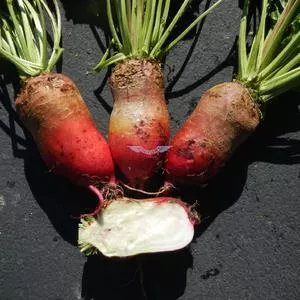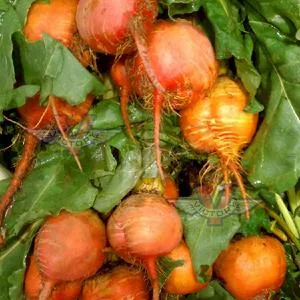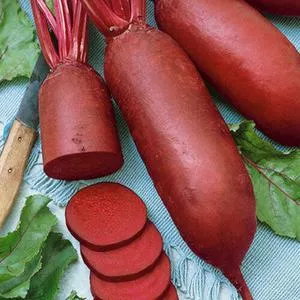








Crosby Egyptian Beet
Price: $3.45
SKU: 3040071Beets are rich in the beneficial carotenoid lycopene, which are effective at scavenging the molecules that have been linked to cancer-causing free radicals. Bright red vegetables are also shown to be useful in increasing blood flow and circulation which is beneficial for heart and lung health.
"Egyptian" beet varieties were developed in Germany in the 1860's.[1] The "Crosby" strain originated from the efforts of Josiah Crosby, an Arlington, Massachusetts market gardener who selected to retain the earliness, increase the depth, and remove the roughness of 'Flat Egyptian.' It was introduced commercially in 1885 by James J. H. Gregory of Marblehead, Massachusetts.[2]
Firm the soil over the seeds and keep moist, making sure that the young roots do not dry out, until seedlings appear. When plants are 1½ to 3-inches tall, thin to three inches apart. The “thinnings” can be eaten as “baby greens.” Water weekly (or as required) in dry weather. Control weeds.
- "The Heirloom Gardener", Carolyn Jabs, Sierra Club Books, 1984.
- "Descriptions of Types of Principal American Varieties of Red Garden Beets", USDA Miscellaneous Publication No. 374, April 1940.
Customer Reviews:
By Robyn Hayes on June 21, 2014
I first tried these beets as one of my New Items in 2013 and now wouldn't be without them. The root is good, a nice firm colorful beet for using fresh in salads, steaming or preserving. But the star quality of this plant is really to be found in the greens. They are exceptional. From the tiniest new leaves to the big floppy older ones they have a taste and texture that is unique and pleasing. They work well steamed alone or in combination with chards and kales. Try them! Easy to grow, and delightful to eat.

